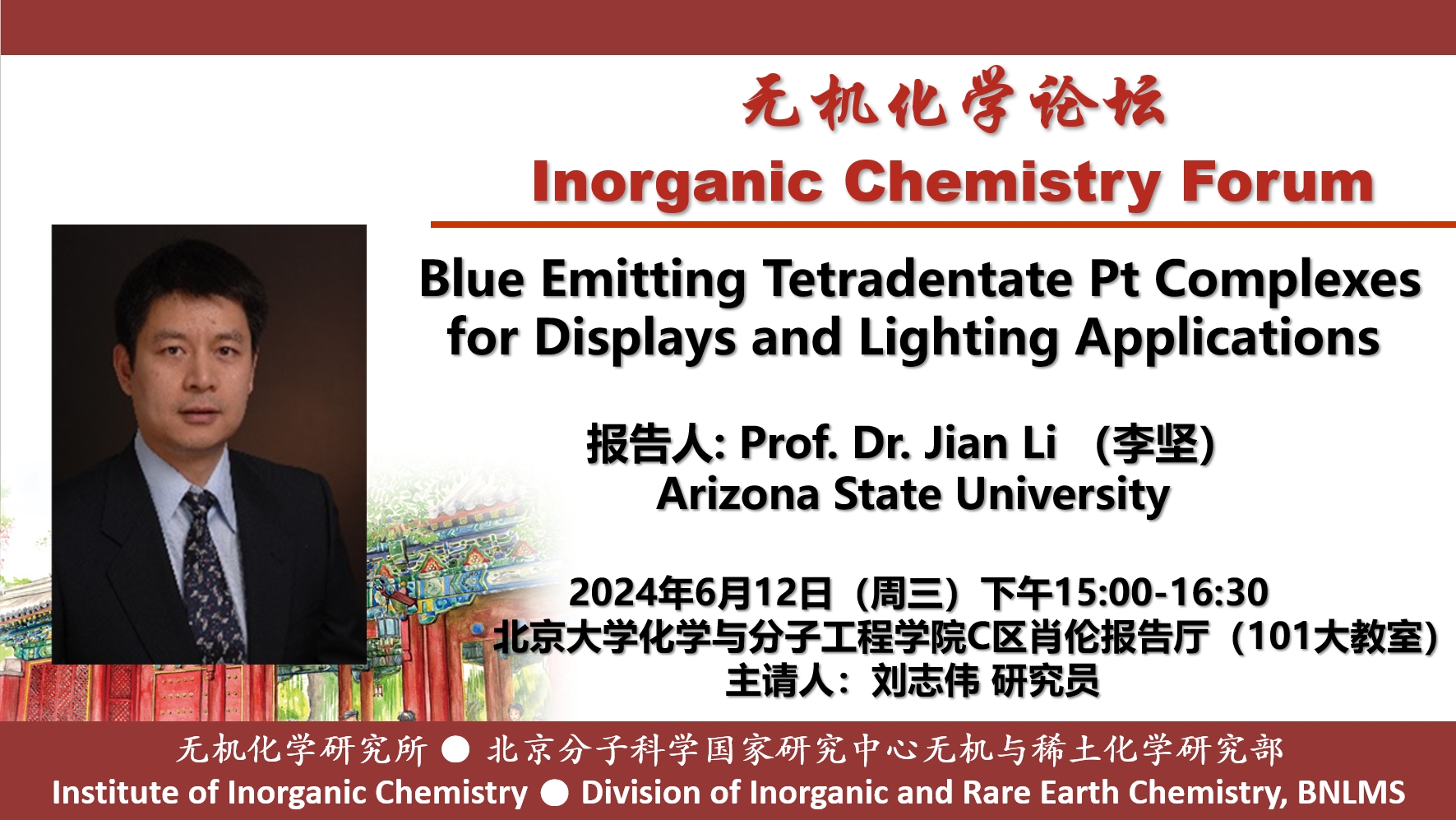
报告摘要
The successful development of efficient and stable molecular blue emissive materials will have a significant impact on the continued deployment of organic light emitting diodes (OLEDs) technology for display and lighting applications. In this presentation, we will discuss our continuing efforts on the design, synthesis and characterization of novel platinum and palladium complexes for displays and lighting applications. The photo-physics, electrochemistry, electroluminescent properties and operational stability of these novel metal complexes, including deep blue narrowband emitters, blue emitters with 6-membered chelate rings and blue MADF emitters, will be discussed, particularly including our 15-year effort in the design of efficient and stable narrowband phosphorescent emitters. The rational molecular design enables us to develop cyclometalated metal complexes with both photon-to-photon (in thin film) and electron-to-photon (in device settings) conversion efficiency close to 100% for OLED applications. Our approaches to achieve improved operational stability of blue OLED using such class will be also included.
报告人简介
Dr. Jian Li received his B.Sc. degree in Chemistry from Fudan University in 1997, and his M.Sc. degree in Electrical Engineering and Ph.D. degree in Chemistry from the University of Southern California during 1999-2005. In 2006, he was appointed as an assistant professor in the School of Materials at the Arizona State University and received his full-tenured promotion in 2018. His research interests include materials design and synthesis for organic semiconductor materials, investigating charge-transporting, energy transfer, and radiative or non-radiative decay process inside of the organic solids. Dr. Li has published over 70 research papers and has received over 100 issued US patents with total citations of over 13000 and h index of 66 (google scholar). He was the recipient of NSF CAREER Award and has been a symposium organizer or co-organizer for multiple MRS and OSA national meetings.